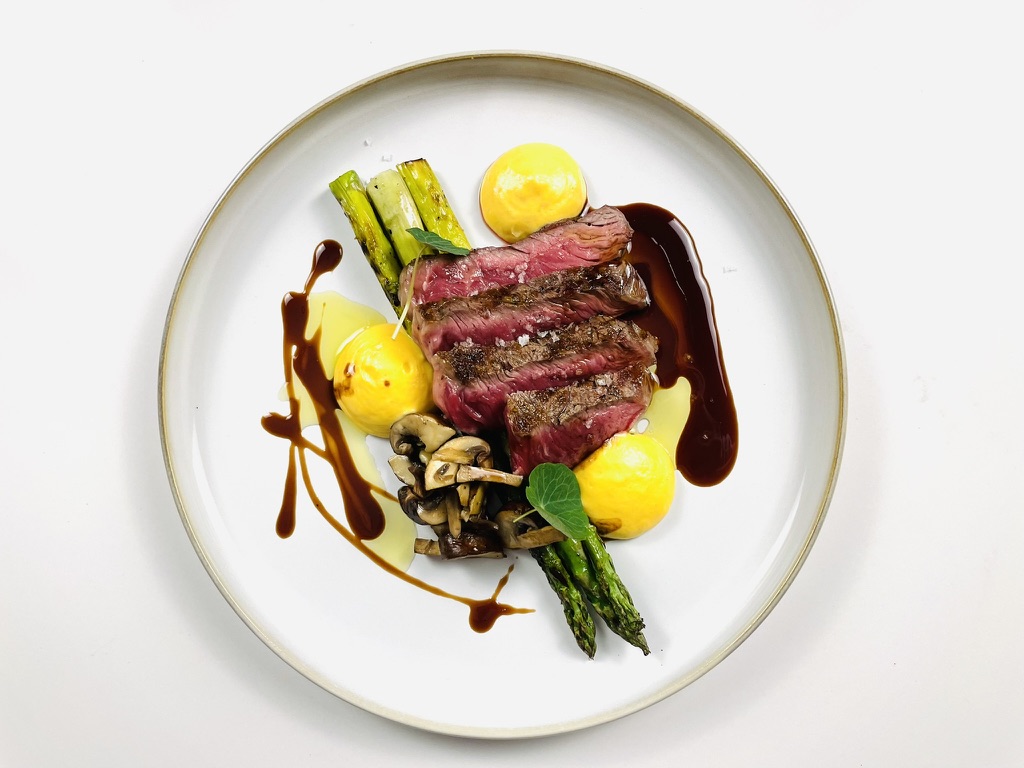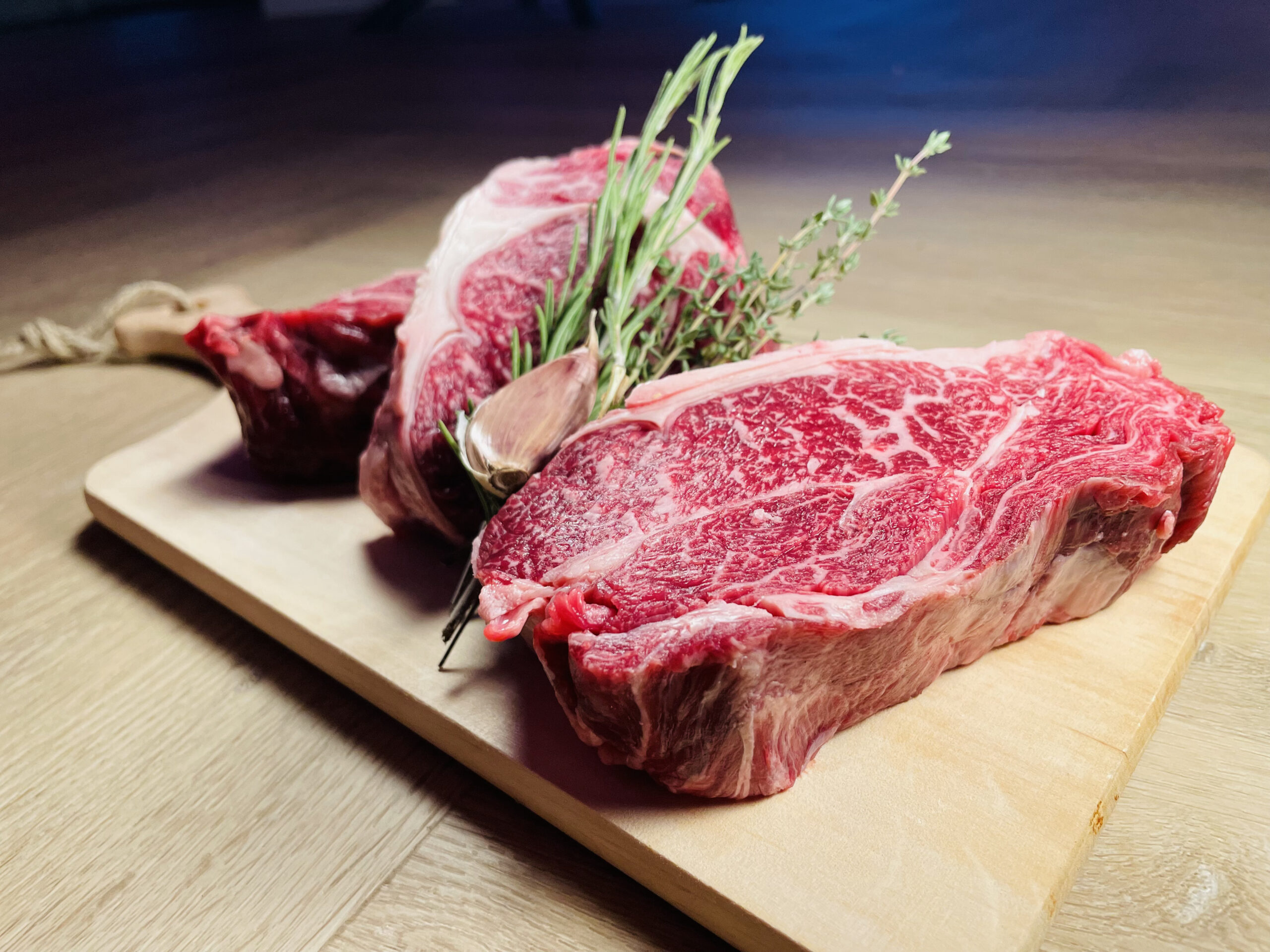If you are a true meat lover, preparing a perfect steak is a must. There are different types, each with their own unique taste and characteristics. The most famous steaks are the tenderloin, T-bone, cote de boeuf, tomahawk, sirloin steak, ribeye, picanha, bavette, long tenderloin (onglet), diamond tenderloin, donkey, flat iron steak (split steak), short rib. , and of course the traditional steak.
The word “steak” is derived from “beefsteak”, which is “steak” in Dutch. It is a collective name for different types of meat that can be eaten at different degrees of doneness. From rare, still red on the inside, to medium, where the meat is warmer and has a pink tint, to well done, where the meat turns dark pink or even beige. Everyone has their own definition of the perfect steak. Preparing the perfect steak is therefore subjective and depends entirely on your own preference.
There are different types of steak depending on where they are cut from the beef. For example, the tenderloin steak, also known as tenderloin, is the most tender. But tenderness is no guarantee of taste. Other steaks often have a more pronounced taste.
Maturation of the meat also plays a major role in the final quality. There are two methods: dry ripening and wet ripening. During dry ripening, the meat loses moisture and the natural enzymes are used to make the meat more tender and flavorful. Wet ripening takes place in vacuum packaging and sours the meat, but there is less moisture loss.

Preparing the perfect steak can be done in different ways. It can be done in a grill pan, frying pan or on the barbecue. It is important to let the meat come to temperature before preparing it. When using a pan, it is important to make sure it is hot before putting the steak in, to avoid overcooking the meat rather than frying it.
On the barbecue you can choose between charcoal and briquettes, depending on the type of steak you want to prepare and how you want to serve it. Charcoal reaches a higher temperature and is ideal for steaks that need to be grilled quickly, while briquettes are better for “low & slow” preparation of larger pieces of meat. Make sure you use natural charcoal or briquettes without chemicals.
Grain fed and grass fed beef
Grain-fed steaks and grass-fed steaks differ significantly in their nutrition, flavor profile and nutritional value. Grain-fed steaks come from cows that eat primarily grains such as corn and soy, resulting in a more tender meat with pronounced marbling and a sweeter flavor. On the other hand, grass-fed steaks are produced by cows that graze primarily grass and other natural foods, giving the meat a firmer texture and a more pronounced “grassy” flavor. Grass-fed meat is often considered more nutritious due to its higher levels of healthy omega-3 fatty acids, CLA and antioxidants, while grain-fed meat tends to be higher in saturated fat and calories. These differences in nutrition and living environment create unique taste experiences and nutritional profiles, giving consumers a wide choice that suits their preferences and dietary needs.
The most important tips at a glance:
Choose the right steak: Choose a good quality steak, such as ribeye, tenderloin or sirloin.
Always go to a good butcher or meat supplier: Visit a reliable butcher to purchase your steak. A good butcher can advise you on the best cuts of meat, the quality of the meat and even make suggestions for preparation.
Let the steak come to room temperature: Remove the steak from the refrigerator about 30 minutes before grilling so that it can warm evenly.
Pat the steak dry: Pat the steak dry with paper towels to remove excess moisture. This helps to get a nice crust while grilling.
Season the steak generously: Season the steak with salt, pepper and any other herbs or spices of your choice. Rub the herbs well so that they adhere well.
Preheat the grill: Preheat the grill to a high temperature, ideally at least around 200-230°C for good caramelization.
Grease the steak: Lightly grease the steak with oil to prevent the steak from sticking.
Grill the steak: Place the steak on the preheated grill or BBQ and let it grill for the desired time, depending on the desired doneness and the thickness of the steak. Turn the steak halfway through for even cooking.
Use a meat thermometer: To achieve the desired doneness, use a meat thermometer to measure the core temperature of the steak. This prevents over or under cooking.
Let the steak rest: After grilling, let the steak rest under aluminum foil for at least 5 minutes, depending on the size of the meat. This helps redistribute the juices in the steak for a juicier result.
Enjoy: Serve the steak and enjoy your perfectly grilled meal!



